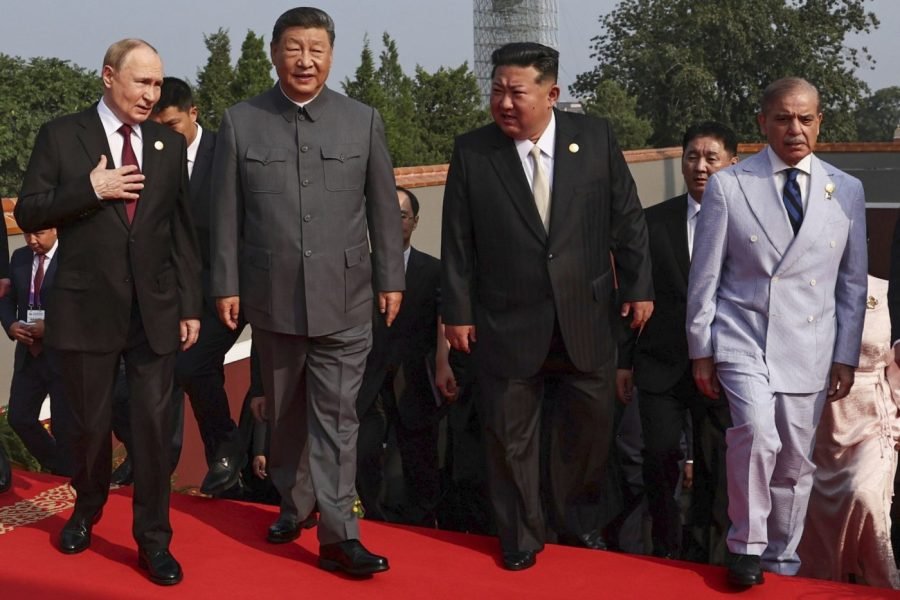Chinese President Xi Jinping, who presided over the “Victory Day” event intended to celebrate the 80th anniversary of Japan’s defeat in World War II, warned the world was facing “the choice of peace or war,” casting little doubt on the country’s aggressive posturing.
“Today, mankind is faced with the choice of peace or war, dialogue or confrontation, win-win or zero-sum,” Xi told a crowd at Tiananmen Square, adding that China was “unstoppable” and that its people “firmly stand on the right side of history.”
The parade marks the first time Xi, Russian President Vladimir Putin and North Korean leader Kim Jong Un have appeared together in public. All three later met formally at China’s State Guesthouse.
President Trump, whose tariffs have strained relations with China and who has grown frustrated with Russia’s resistance to ending its war in Ukraine, in a Wednesday post on Truth Social asked Xi to “give my warmest regards to Vladimir Putin, and Kim Jong Un, as you conspire against the United States of America.”
Trump later suggested China’s military parade was designed in part for him to view.
“I understood the reason they were doing it, and they were hoping I was watching — and I was watching,” he said from the White House while meeting with the Polish president.
“My relationship with all of them is very good. We’re going to find out how good it is over the next week or two,” Trump added, referring to Xi, Kim and Putin, the later of whom he met with in Alaska last month to attempt to broker an end to Russia’s war in Ukraine.
No U.S. delegation attended the grand military display, but more than 25 foreign heads of state or government, including international pariahs, Iranian President Masoud Pezeshkian and Belarusian President Alexander Lukashenko, were in Beijing for the event.
The parade, a 70-minute affair that included marching soldiers, formations of helicopters and fighter jets and an endcap release of 80,000 doves, showcased China’s latest military hardware such as missiles capable of delivering nuclear warheads.
Among them was the new intercontinental ballistic missile DF-61, reportedly capable of flying more than 7,500 miles while carrying multiple warheads, and the newest version of the silo-based DF-5, the DF-5C, the Associated Press reported. That missile has an estimated range of nearly 12,500 miles.
Read the full report at TheHill.com.
